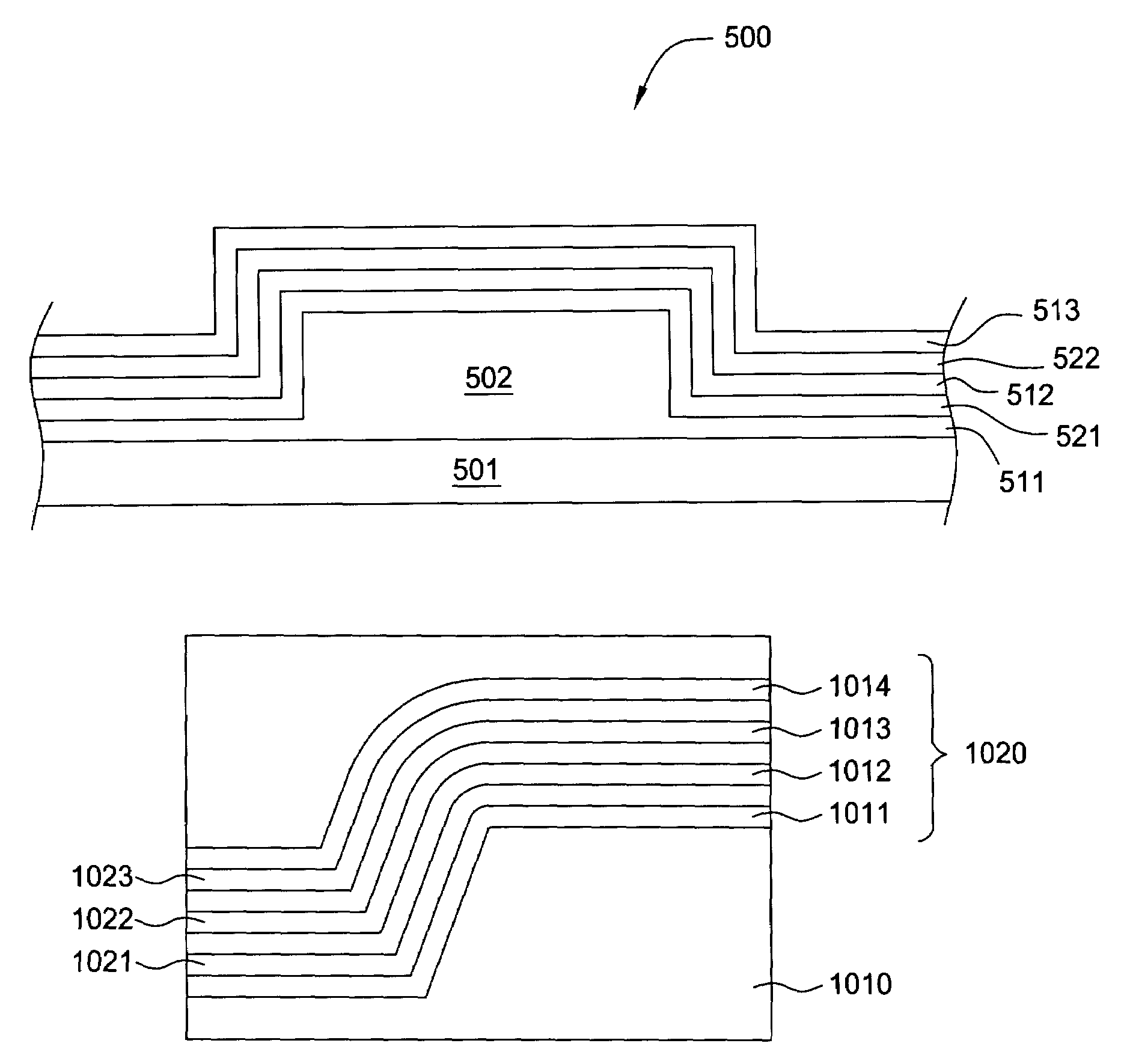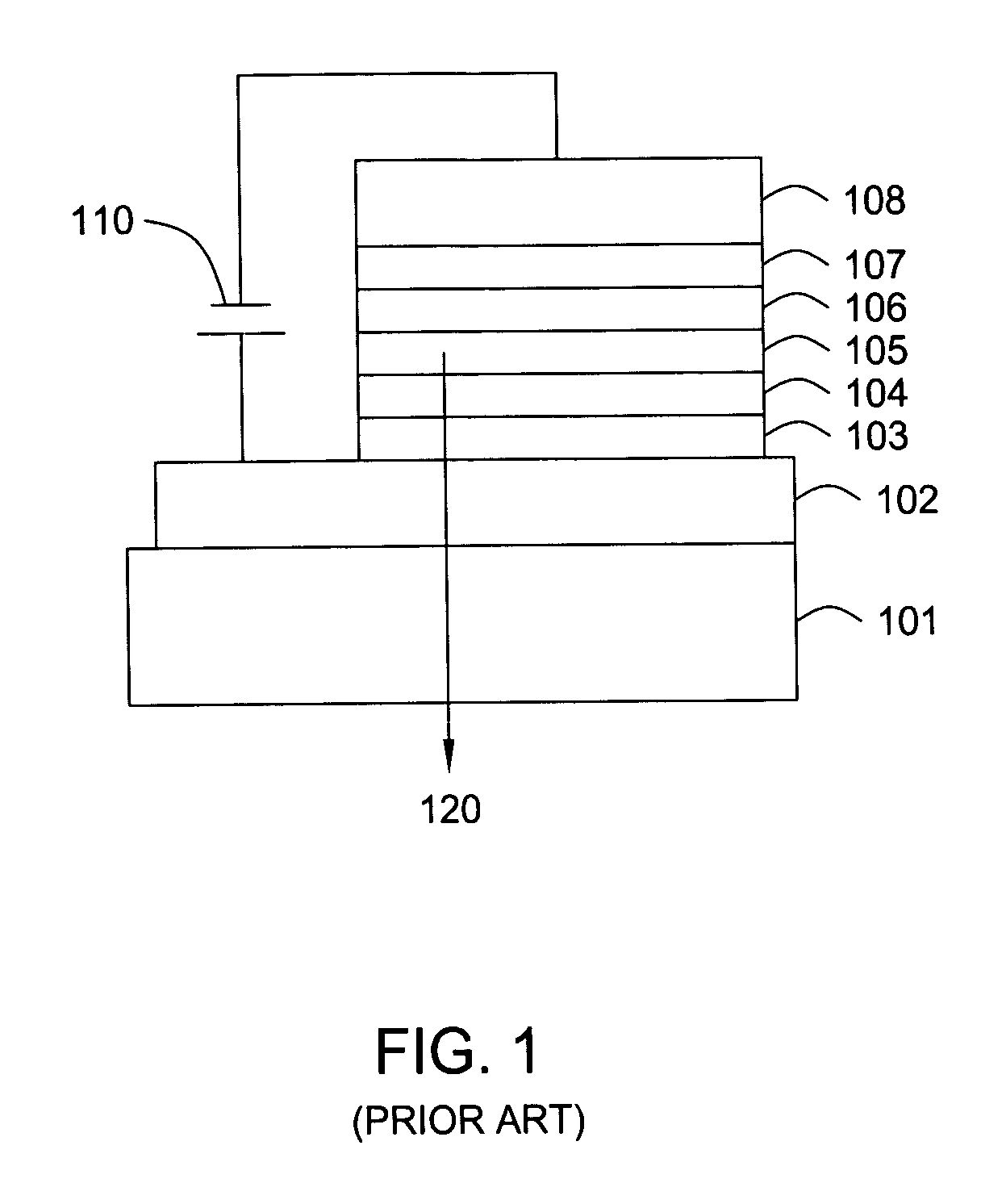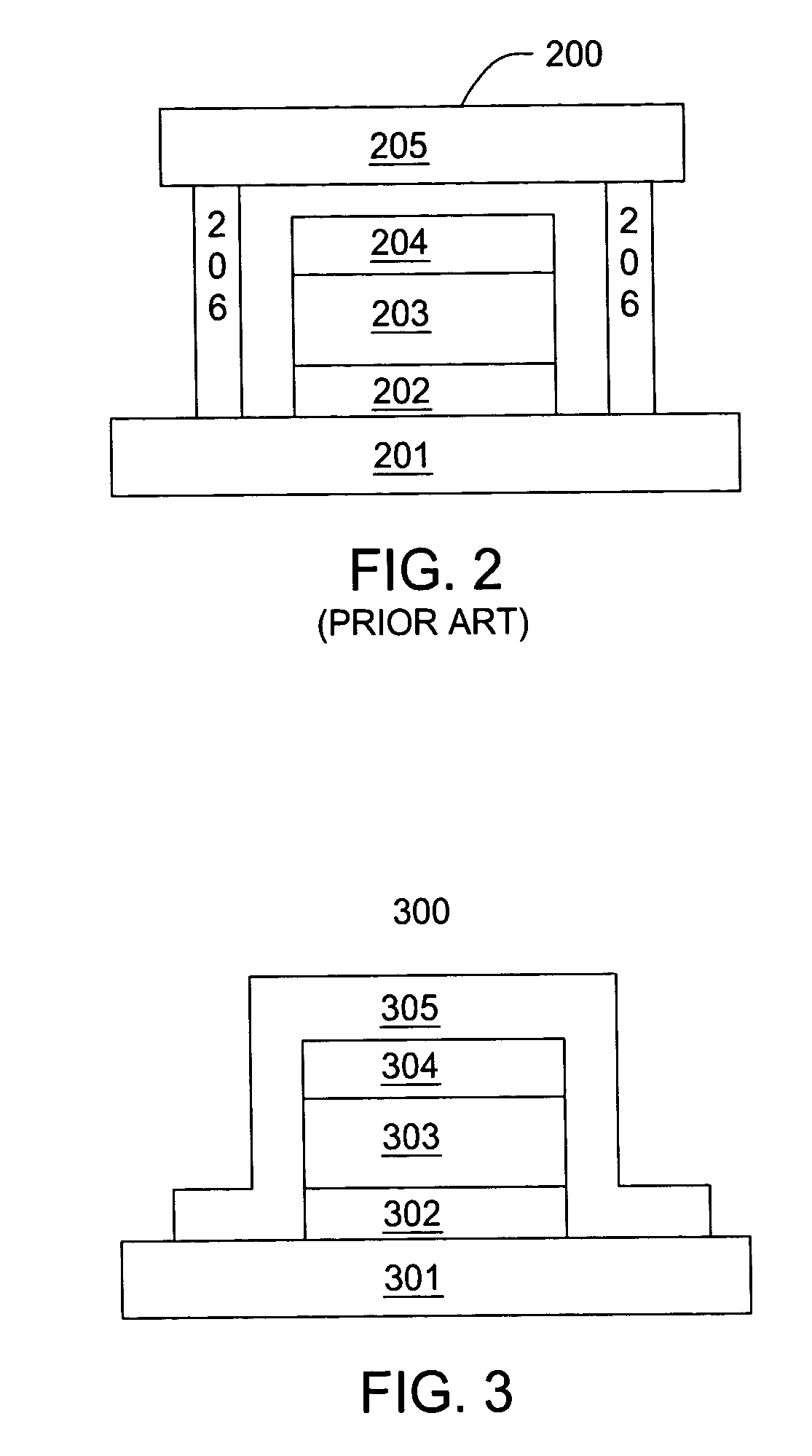Water-barrier performance of an encapsulating film
a technology of encapsulating layer and water barrier, which is applied in the direction of solid-state diffusion coating, coating, transistor, etc., can solve the problems of increasing drive voltage, reducing el efficiency, and limited life of display device, and achieve the effect of improving the water barrier performance of the encapsulating layer
- Summary
- Abstract
- Description
- Claims
- Application Information
AI Technical Summary
Benefits of technology
Problems solved by technology
Method used
Image
Examples
examples
[0097]FIG. 8 illustrates a flow chart of one exemplary deposition method 800 in accordance with one embodiment of the invention. At step 802, one or more silicon-containing inorganic barrier layers are deposited onto the surface of a substrate in a substrate processing system using a silicon-containing compound and a hydrogen gas. At step 804, one or more amorphous carbon layers are deposited in between the one or more silicon-containing inorganic barrier layers in the same or different substrate processing system using a carbon-containing compound and a hydrogen gas. Preferably, an initial layer of a silicon-containing inorganic barrier material, such as a silicon nitride layer is deposited first to provide as a good water and oxygen barrier for any layers underneath the silicon nitride layer and on the substrate.
[0098]FIG. 9 shows the optical transmittance of one exemplary barrier layer and exemplary low-dielectric constant material layer. The exemplary barrier layer is a silicon ...
PUM
| Property | Measurement | Unit |
|---|---|---|
| temperature | aaaaa | aaaaa |
| thickness | aaaaa | aaaaa |
| surface roughness | aaaaa | aaaaa |
Abstract
Description
Claims
Application Information
 Login to View More
Login to View More - R&D
- Intellectual Property
- Life Sciences
- Materials
- Tech Scout
- Unparalleled Data Quality
- Higher Quality Content
- 60% Fewer Hallucinations
Browse by: Latest US Patents, China's latest patents, Technical Efficacy Thesaurus, Application Domain, Technology Topic, Popular Technical Reports.
© 2025 PatSnap. All rights reserved.Legal|Privacy policy|Modern Slavery Act Transparency Statement|Sitemap|About US| Contact US: help@patsnap.com



